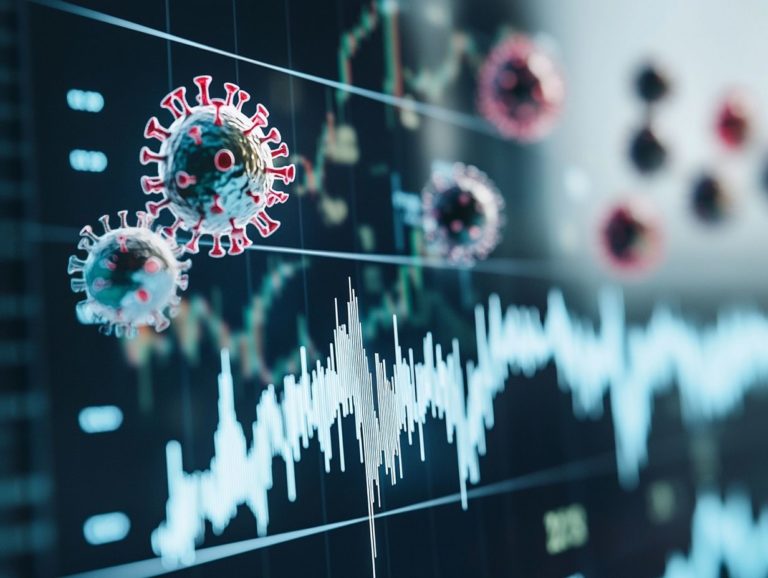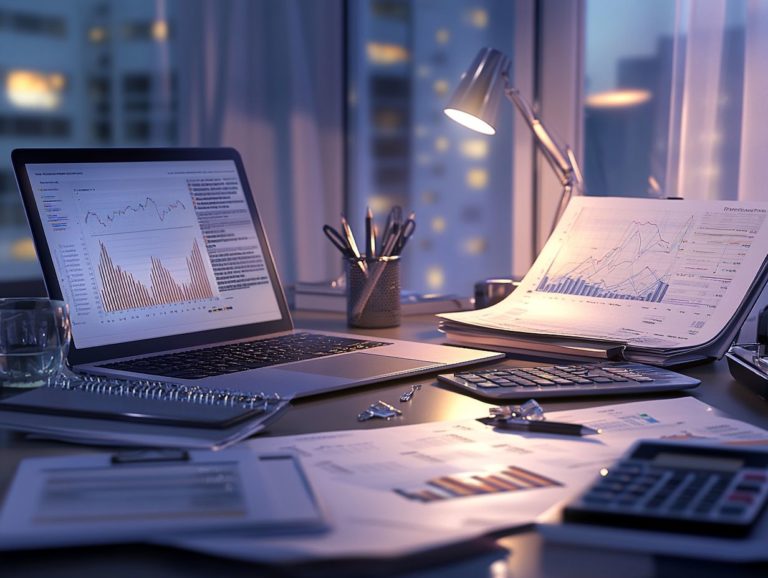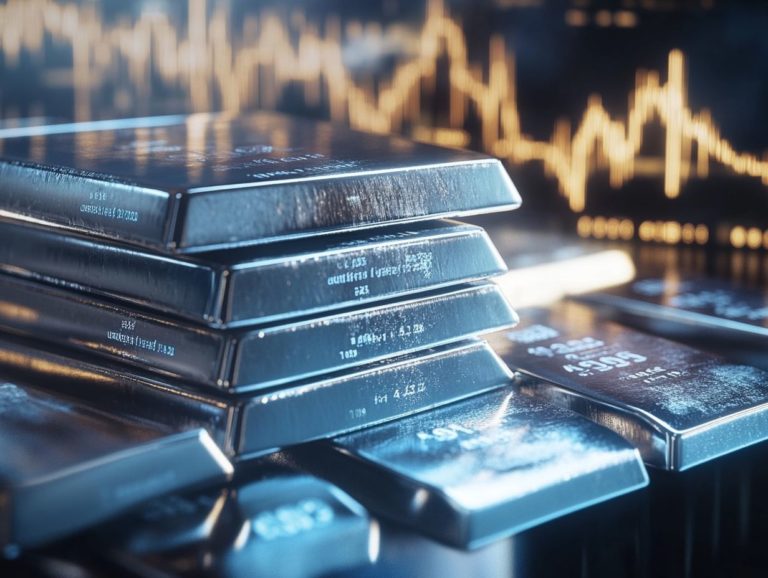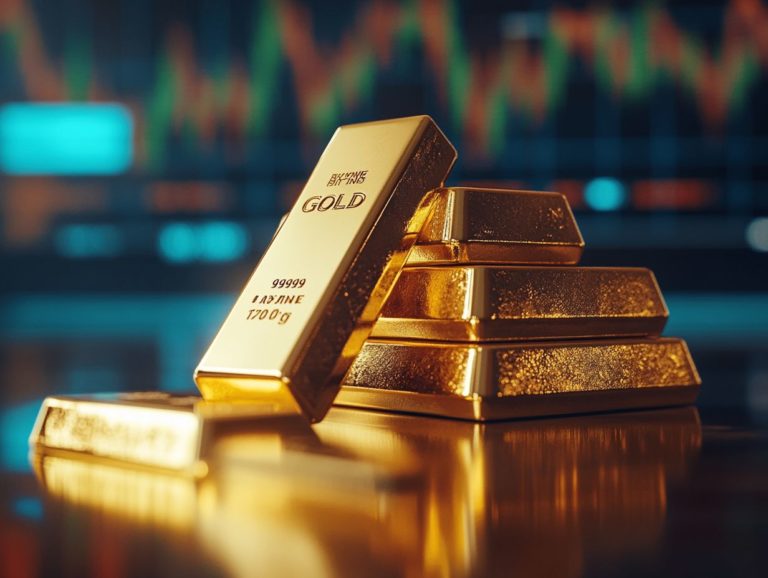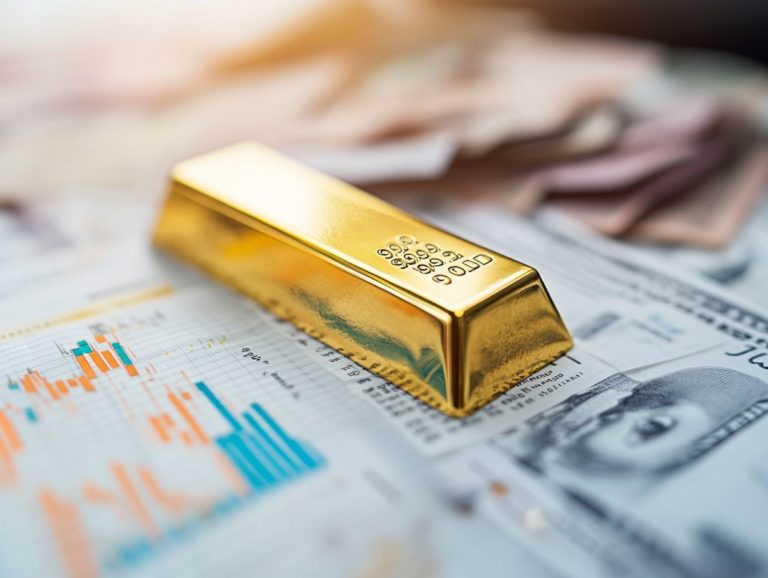The Importance of Demand in Precious Metals
If you’re into precious metals, understanding demand is crucial for you!
This article delves into the definition and critical factors that shape demand, covering both economic and industrial elements. It explores how demand profoundly affects price fluctuations and presents strategies designed to maximize your investment returns.
You ll find an analysis of market trends aimed at helping you anticipate future demand. By the end, you ll have a comprehensive understanding that will empower you to navigate the precious metals market with confidence and skill.
Contents
- Key Takeaways:
- Understanding Demand in Precious Metals
- Factors Affecting Demand
- The Role of Demand in Price Fluctuations
- Investing in Precious Metals Based on Demand
- Predicting Future Demand for Precious Metals
- Frequently Asked Questions
- What is the significance of demand in precious metals?
- How does demand affect the prices of precious metals?
- Why is demand a key factor in the precious metals market?
- What factors influence the demand for precious metals?
- How does demand for precious metals differ from other commodities?
- Why is it important to understand the demand for precious metals?
Key Takeaways:
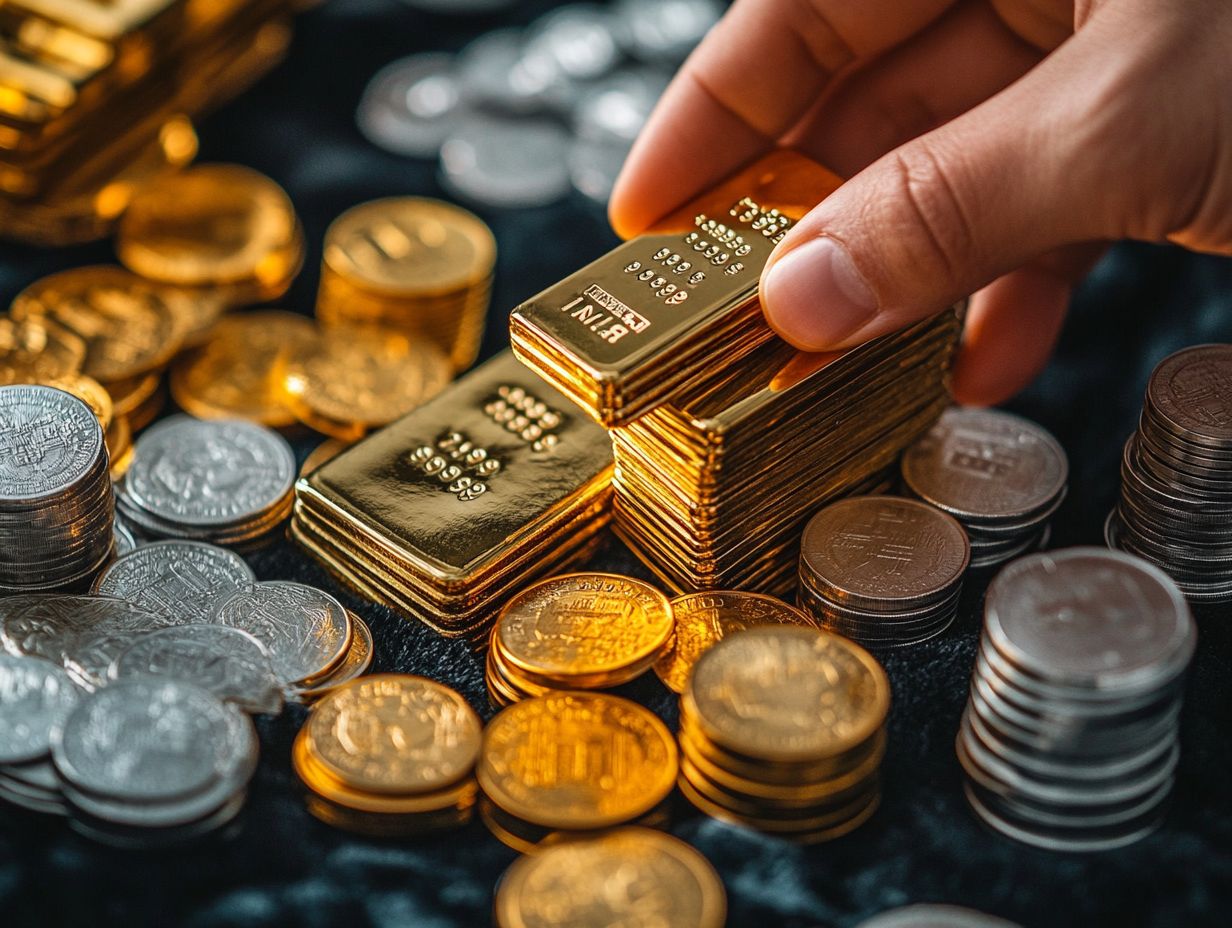
- Demand plays a crucial role in the pricing of precious metals, making it a key factor to consider when investing in these assets.
- Economic and industrial factors greatly influence the demand for precious metals, so staying updated on market trends is essential.
- Investors can maximize returns by strategically investing in precious metals based on demand, using strategies like diversification and dollar-cost averaging.
Understanding Demand in Precious Metals
Understanding the demand for precious metals like gold, silver, and platinum is crucial for you as an investor or collector. These metals have long been viewed as a hedge against inflation and a safe haven during economic uncertainty.
Recognizing how demand fluctuates shaped by market trends, geopolitical tensions, and consumer preferences can offer you valuable insights into the economic value and potential investment opportunities in the ever-evolving precious metals market.
Definition and Explanation
Demand for precious metals reflects your desire, whether as an investor or a consumer, to acquire these invaluable resources like gold, silver, and platinum. This desire is often driven by factors such as how the economy is doing and investment potential.
You can gauge this demand through market prices and trading volumes, as well as various forms like coins, bars, and jewelry.
Economic uncertainty and inflation shape this demand, nudging investors toward these metals as safe-haven assets. During times of geopolitical unrest or declining equity markets, heightened interest in gold and silver often occurs, as they are viewed as reliable stores of value.
In your investment portfolio, these metals act as diversification tools, providing a hedge against market volatility while also offering the potential for long-term capital appreciation.
Factors Affecting Demand
The demand for precious metals is influenced by diverse economic variables, industrial processes, and geopolitical tensions. Each factor intricately weaves into the fabric of market dynamics, ultimately shaping the scarcity and value of metals such as gold, silver, and platinum.
Understanding these influences allows you to navigate the complexities of the precious metals market with greater insight and awareness.
Economic and Industrial Factors
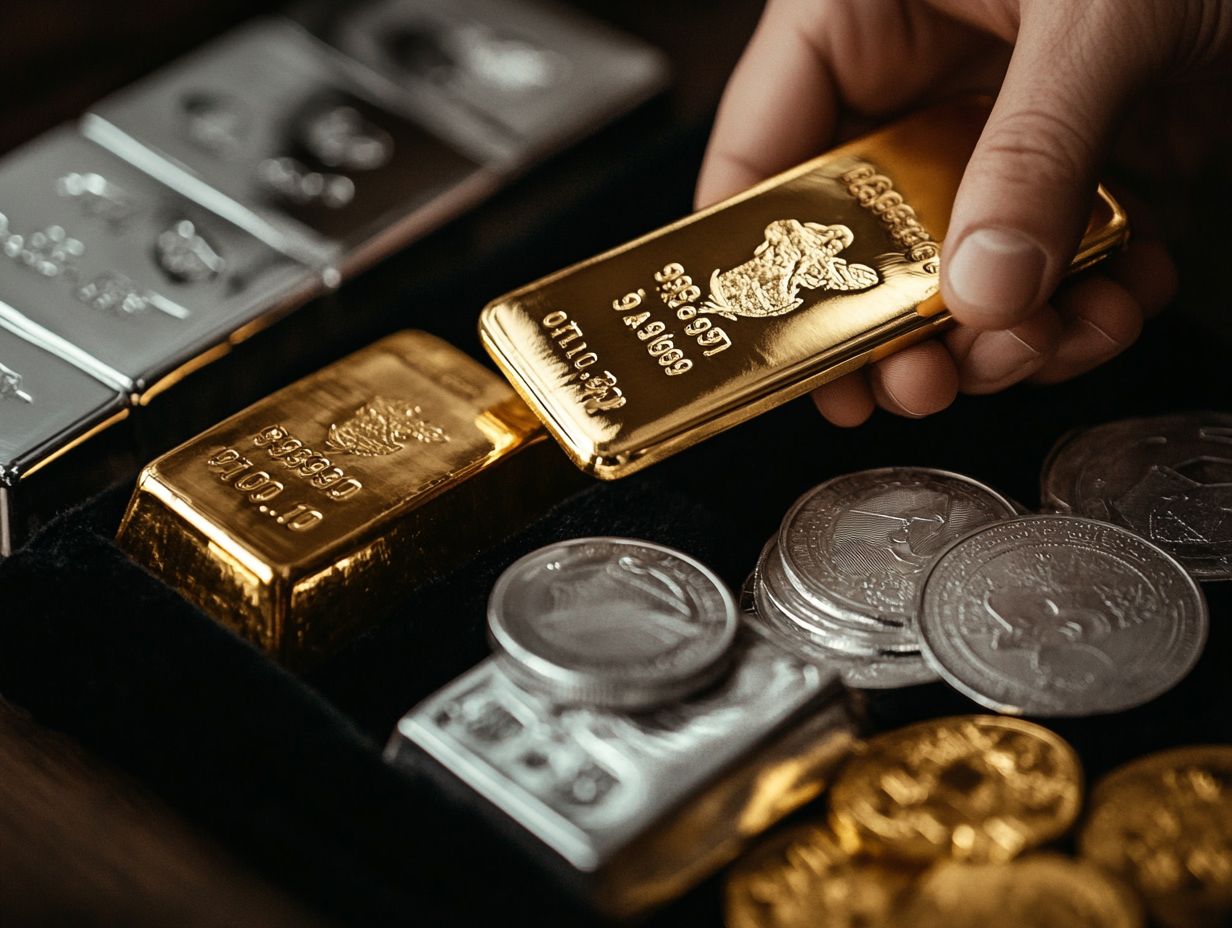
Economic factors like inflation, interest rates, and currency fluctuations significantly impact your demand for precious metals, shaping market trends and consumer behavior.
These dynamics reveal a complex relationship where rising inflation often nudges you toward precious metals as a safe haven. Historical trends show how central banks’ actions, especially during economic downturns, can trigger an uptick in purchasing these metals, reinforcing their role as a hedge against uncertainty.
The industrial sector also plays a crucial part in demand fluctuations. Precious metals like platinum and palladium are essential in manufacturing, and advancements in technology and a shift toward electric vehicles are driving their consumption up.
As industries evolve, the interdependence between economic indicators and the market for precious metals becomes increasingly intricate.
The Role of Demand in Price Fluctuations
The relationship between demand and price fluctuations in the precious metals market is crucial for investors. Shifts in demand can cause significant price volatility in commodities like gold, silver, and platinum.
Understanding this dynamic empowers you to make informed decisions in a market that is often unpredictable.
Relationship between Demand and Price
The connection between demand and price is evident in the precious metals market. A surge in buying activity typically pushes the prices of gold, silver, and platinum higher.
Several factors influence pricing fluctuations. For example, data from the World Gold Council shows that a 10% increase in demand can lead to an approximate 5% spike in gold prices, highlighting how sensitive the market can be.
Historically, during periods of economic uncertainty or inflation like the 2008 financial crisis investors have gravitated towards precious metals, resulting in significant price surges.
Central banks also play an important role; their interest rate policies and currency supply decisions can inadvertently impact demand for these metals.
Consumer preferences change quickly, driven by trends in jewelry consumption or technological innovations. These shifts can lead to sudden market fluctuations that have reshaped the landscape in the past.
Investing in Precious Metals Based on Demand
Investing in precious metals driven by demand necessitates a thoughtful strategy. These assets not only provide a safeguard against inflation but also serve as a dependable diversifier for your portfolio.
They offer enduring economic value that can weather market fluctuations.
Strategies for Maximizing Returns
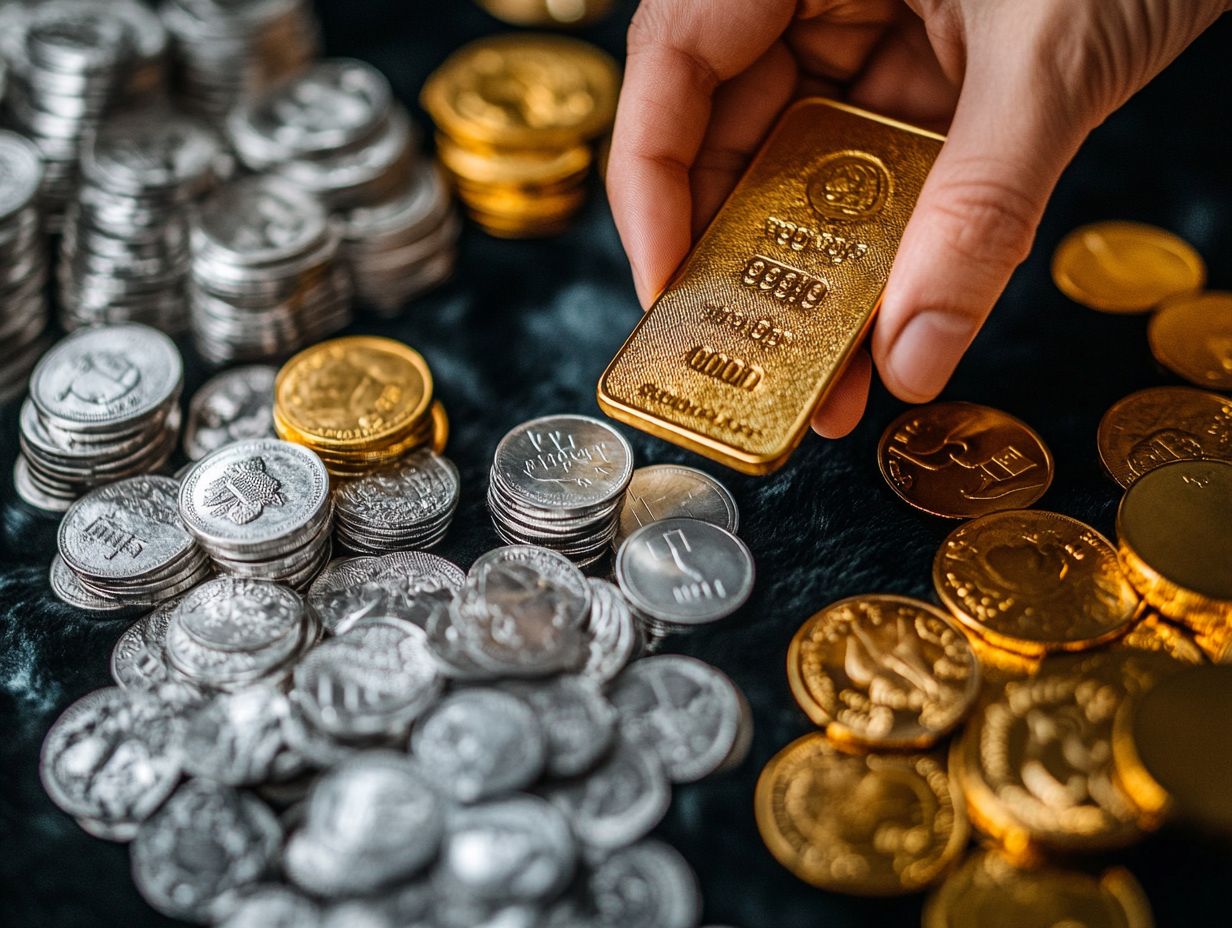
To maximize your returns on investments in precious metals, consider strategies involving careful timing, diversification, and a solid grasp of market demand dynamics.
By closely monitoring global economic indicators and geopolitical tensions, you can pinpoint the most advantageous moments for purchasing gold, silver, and other valuable assets.
Incorporating different types of investments, such as ETFs (Exchange-Traded Funds) or physical bullion (gold or silver bars), allows you to create a balanced approach that mitigates risks while enhancing potential gains.
Establishing a clear exit strategy is essential, ensuring you can capitalize on price surges without being caught off guard during downturns.
Understanding the cyclical nature of precious metals markets further empowers you to navigate this dynamic landscape effectively.
Stay informed and ready to act when the market shifts!
Predicting Future Demand for Precious Metals
To effectively predict future demand for precious metals, conduct a thorough analysis of current market trends, assess economic conditions, and consider the potential impact of geopolitical tensions on investor behavior.
Market Trends and Analysis
Analyzing market trends related to the demand for precious metals involves a careful examination of economic data, consumer behaviors, and global events that can impact their value.
This intricate process requires a comprehensive approach, utilizing analytical tools like moving averages and relative strength indices to assess price fluctuations effectively.
Keep an eye on geopolitical tensions, currency valuations, and interest rate changes, as each can signal shifts in market dynamics.
Understanding how to interpret metrics such as the Purchasing Managers’ Index (PMI) or unemployment rates will provide deeper insights into consumer confidence and industrial demand.
Analyzing these indicators helps you predict potential market changes. This knowledge empowers you to make informed investment decisions.
Frequently Asked Questions
What is the significance of demand in precious metals?
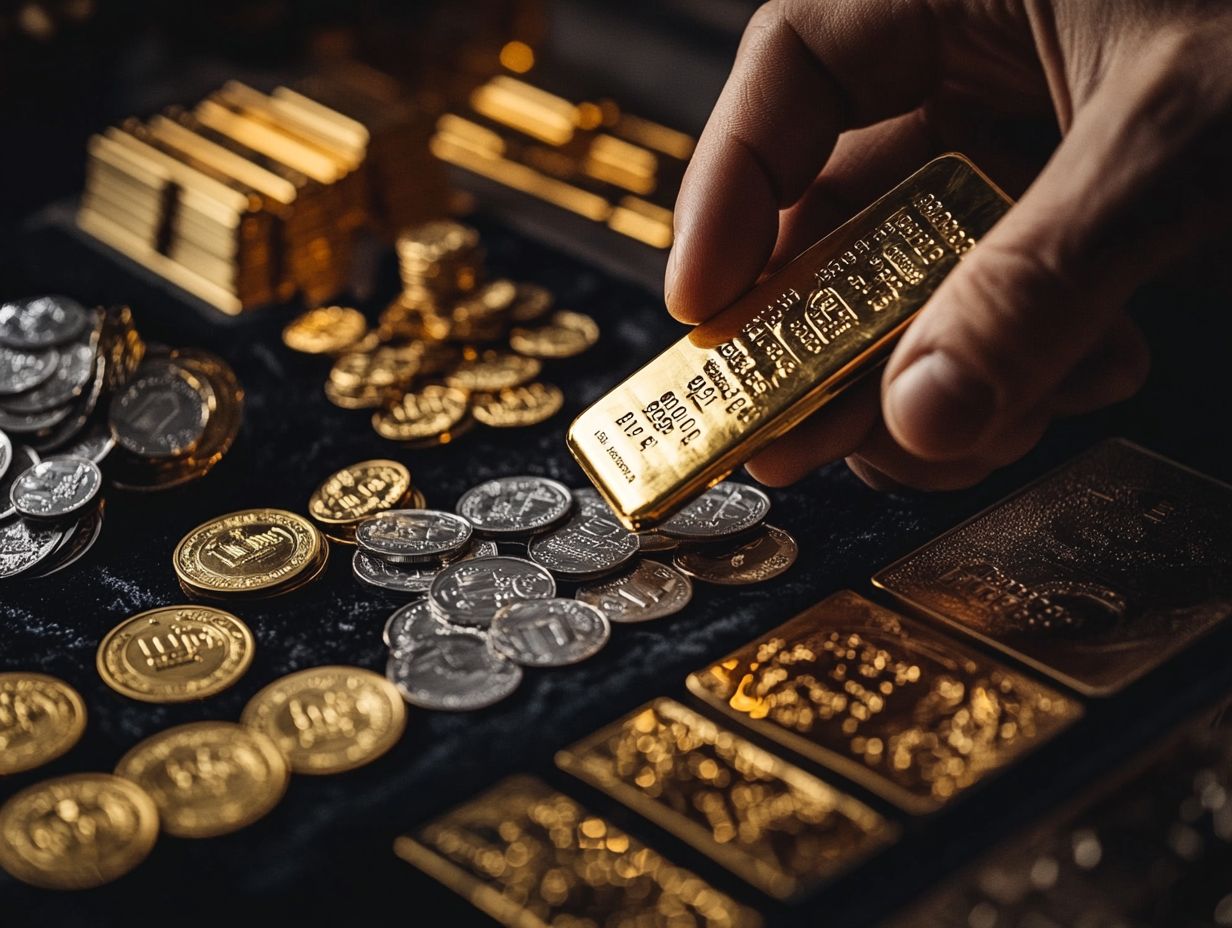
Demand is vital in setting the value of precious metals. This includes gold, silver, and platinum.
How does demand affect the prices of precious metals?
The higher the demand for a specific precious metal, the higher its price will be. This is due to its limited supply and increasing scarcity.
Why is demand a key factor in the precious metals market?
Demand is a key factor because it drives the market and creates price fluctuations. This makes it essential for investors and traders to consider.
What factors influence the demand for precious metals?
The demand for precious metals can be influenced by various factors such as economic conditions, world events, and industrial applications.
How does demand for precious metals differ from other commodities?
The demand for precious metals is unique. It is driven by both investment and industrial needs, unlike other commodities that are mainly influenced by industrial or consumer demand.
Why is it important to understand the demand for precious metals?
Understanding demand for precious metals is crucial! It helps you make smarter buying or selling decisions and provides insight into market trends and potential investment opportunities.










